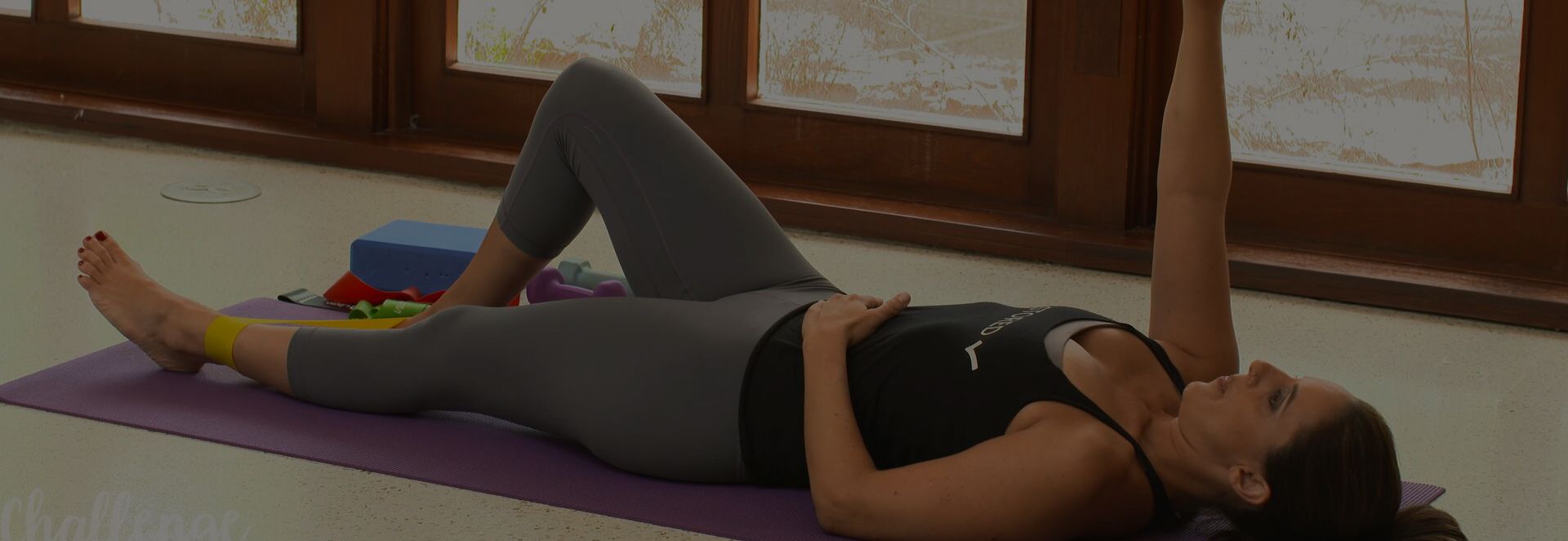Resources
- Pelvic Floor Exercises for Constipation: Awareness, Movement, and Nervous System Relief
- High-Tone Pelvic Floor Dysfunction: Symptoms, Causes & Relief Tips
- How Menopause Affects the Pelvic Floor: Symptoms, Support & Hormonal Impact
- Tailbone Wagging for Tailbone Pain Relief and Pelvic Floor Mobility
- The Power of Tremoring: How Tension Release Exercises Support Your Nervous System
- Pelvic Floor Postpartum Exercises for Faster Recovery
- Navigating Coccyx Pain in Pregnancy: A Trimester-by-Trimester Guide
- Understanding Coccyx Pain: Symptoms, Causes, Healing and Prevention
- Pilates and Pelvic Floor Dysfunction: Is It the Solution You’re Seeking?
- 5 Pilates Pelvic Floor Exercises You Don’t Want to Leave Out
- Pelvic Floor Massage: A Comprehensive Guide
- Does Pilates Strengthen Pelvic Floor Muscles? A Comprehensive Guide
- Hypermobility and Pelvic Floor Health: What You Need to Know
- The Foot to Pelvic Floor Connection: A Whole-Body Approach to Movement and Health
- Understanding Pelvic Floor Pain After Running: Causes and Solutions for Professionals
- Top 5 Exercises to Strengthen the Pelvic Floor
- Do Squats Strengthen Pelvic Floor Muscles? Insights for Movement Professionals
- How Pelvic Floor Health Is Related to the Process of Moving from Arousal to Orgasm
- 5 Things I Wish People Knew About Your Pelvic Floor & Orgasm
- Pelvic Floor Tension: Everything You Need to Know
- How Running and Pelvic Floor Health Are Interconnected: What Every Runner Should Know
- Does Running Strengthen Pelvic Floor Muscles? Myths vs. Facts
- Understanding Urine Leakage Causes: Why It Happens and How to Manage It
- How to Strengthen Your Pelvic Floor: The Ultimate Guide
- Strengthening and Restorative Yoga Poses for Full Body Health
- Understanding Queefing: Causes, Symptoms, and Simple Prevention Tips
- How Do You Know if You Have a Weak Pelvic Floor
- What Does Pelvic Floor Pain Feel Like?
- How Can I Strengthen My Pelvic Floor Without Kegels?
- Pelvic Floor Stretches | 5 Quick Ways To Relax Your Pelvis
- Pelvic Floor Specialist | Finding Help To Heal Your Pelvis
- Is Pelvic Floor Repair Major Surgery? | Pelvic Health Guide
- Pelvic Floor Exercise
- Pelvic Floor Therapy | Improving Your Pelvic Health
Resources
- Pelvic Floor Exercises for Constipation: Awareness, Movement, and Nervous System Relief
- High-Tone Pelvic Floor Dysfunction: Symptoms, Causes & Relief Tips
- How Menopause Affects the Pelvic Floor: Symptoms, Support & Hormonal Impact
- Tailbone Wagging for Tailbone Pain Relief and Pelvic Floor Mobility
- The Power of Tremoring: How Tension Release Exercises Support Your Nervous System
- Pelvic Floor Postpartum Exercises for Faster Recovery
- Navigating Coccyx Pain in Pregnancy: A Trimester-by-Trimester Guide
- Understanding Coccyx Pain: Symptoms, Causes, Healing and Prevention
- Pilates and Pelvic Floor Dysfunction: Is It the Solution You’re Seeking?
- 5 Pilates Pelvic Floor Exercises You Don’t Want to Leave Out
- Pelvic Floor Massage: A Comprehensive Guide
- Does Pilates Strengthen Pelvic Floor Muscles? A Comprehensive Guide
- Hypermobility and Pelvic Floor Health: What You Need to Know
- The Foot to Pelvic Floor Connection: A Whole-Body Approach to Movement and Health
- Understanding Pelvic Floor Pain After Running: Causes and Solutions for Professionals
- Top 5 Exercises to Strengthen the Pelvic Floor
- Do Squats Strengthen Pelvic Floor Muscles? Insights for Movement Professionals
- How Pelvic Floor Health Is Related to the Process of Moving from Arousal to Orgasm
- 5 Things I Wish People Knew About Your Pelvic Floor & Orgasm
- Pelvic Floor Tension: Everything You Need to Know
- How Running and Pelvic Floor Health Are Interconnected: What Every Runner Should Know
- Does Running Strengthen Pelvic Floor Muscles? Myths vs. Facts
- Understanding Urine Leakage Causes: Why It Happens and How to Manage It
- How to Strengthen Your Pelvic Floor: The Ultimate Guide
- Strengthening and Restorative Yoga Poses for Full Body Health
- Understanding Queefing: Causes, Symptoms, and Simple Prevention Tips
- How Do You Know if You Have a Weak Pelvic Floor
- What Does Pelvic Floor Pain Feel Like?
- How Can I Strengthen My Pelvic Floor Without Kegels?
- Pelvic Floor Stretches | 5 Quick Ways To Relax Your Pelvis
- Pelvic Floor Specialist | Finding Help To Heal Your Pelvis
- Is Pelvic Floor Repair Major Surgery? | Pelvic Health Guide
- Pelvic Floor Exercise
- Pelvic Floor Therapy | Improving Your Pelvic Health
How to Strengthen Pelvic Floor
By Lauren Ohayon 01/13/2021
4 Min Read
Your pelvis is vital to supporting your spine and your entire body. At times, the pelvic floor may become overactive or hypertonic. When this happens, the muscles may be overly tight or tense when they should be relaxed. learning to relax and release the correct muscles in your pelvic floor (contracting the muscles as shortly as you would by bulging your bicep – or a long contraction as you would stretching out the bicep). If you have an overactive pelvic floor, you may experience symptoms such as: back pain, painful intercourse, a feeling of heaviness in your pelvic floor muscles, or incontinence.
Table of Contents
What Causes a Weak Pelvic Floor?
Pelvic floor weakness is often caused by a wide variety of issues. Some of these health concerns usually include:
- Pregnancy
- Childbirth
- Prostate cancer (in males), prostate surgery
- Chronic constipation (straining from constipation or pain during bowel movements, or passing of wind)
- Pelvic organ prolapse, previous prolapse surgery
- Pelvic floor dysfunction symptoms

If your pelvic floor muscles are weakened, your body may begin experiencing a lack of support and alignment. Exercises can help strengthen your pelvic floor muscles and restore the proper support and alignment your body requires to function properly. They may also help alleviate pain and other symptoms you may be facing, such as:
- Urinary stress incontinence (difficulty with bladder control)
- Severe urine leakage
- Overflow incontinence (overactive bladder)
- Fecal incontinence
- Pelvic pain, pain near or around the belly button
- Pain during sex
- Sexual function disorder
How to Strengthen Your Pelvic Floor Muscles
Find Your Pelvic Floor Muscles
Education is one of the primary benefits that we at RYC offer in our programs. Understanding where your pelvic floor muscles are located and how they affect your body can help benefit your recovery. In my program, I help men and women learn more about how their bodies work and how proper pelvic floor muscle training can teach them how to engage their bodies properly during their muscle training exercises.
Pelvic Floor Exercises
Exercise can be a great way to heal your pelvic floor. Unfortunately, in many work out programs for postpartum people and others seeking pelvic floor recovery, kegel exercises are the most commonly recommended exercise to use. However, kegel exercises can actually increase stiffness and make it harder to feel your pelvic floor muscles. Avoiding unnecessary contraction during pelvic floor exercises can be beneficial to recovering the strength and mobility of your pelvic floor muscles.
If we want things to shift in our pelvic floor, we need to also shift the habit mode of our muscles. In the case of our pelvic floors, there tends to be much confusion. Is my pelvic floor too tight? Not tight enough? How can I tell the resting tension? How can I fix it? Before we set out to resolve/fix our pelvic floor dysfunction we need to first “know” our pelvic floor. Know what engaging it feels like, what releasing it feels like, and how to control both contracting and releasing it. Only then we can discern what our tendencies are and create new movement patterns and choices.
Pelvic Floor Exercises: Stretching

Below are a few pelvic floor exercises I cover in my program at RYC. These exercises may help you begin to feel the way your muscles work and go way beyond kegel exercises.
Supine Pelvic Floor Stretch:
Lying on your back, keep your knees bent and bring them toward your chest. Slowly extend your knees to the side to stretch the inner groin. Relax your pelvic floor and butt. Hold this position for 5 to 10 breaths and relax.
Supported Slight Backbend Pelvic Stretch:
This is a fantastic pelvic stretcher. Using a pillow or bolster of some kind, gently lower your back to rest on top of the pillow. Once in position, slowly bring your feet together so the soles of your feet are touching. Keep your knees bent, but gently allow them to open sideways. If you feel any discomfort at all in your back or inner thighs, you can use pillows for further support or get rid of the bolster. Hold for 30 seconds or more (roughly 15 to 20 breaths) and relax.
Supported Pelvic Squat:
This stretch is an incredible hip and pelvis stretch. Grab a low stool or a stack of books and with your feet spread wide and toes pointed out sideways, gradually extend your buttocks and lower yourself to the blocks. If you are struggling to balance yourself, it may be helpful to use a wall for back support. It is important that if you experience any discomfort during these stretches that you reposition yourself until you can firmly plant your feet and bend without pain. Hold this squatted position for close to 30 seconds (5-10 deep breaths), stand back up, relax, and repeat several times. Please note, that for some people with prolapse – a deep squat can really irritate and aggravate things due to bearing down, so be sure to only do this one if you feel comfortable that you are not bearing down in a low squat.
How Long Does it Take to Strengthen the Pelvic Floor?
We want to train the pelvic muscles to respond to our actions, exercises and movements. Just tightening it in a shortening contraction is not going to get us there. So… how do we make sure our pelvic muscles are functioning correctly?
Pelvic floor muscle alignment is the first step. Our pelvic floor muscles attach to our pelvis. The positioning of our pelvis affects the tone and length of the pelvic floor. If we are tucked under in the pelvis all the time, the muscles will be held in a more shortened position. Loading them will be very hard. Hence, the alignment awareness step to all of this work.
Next, we need to make sure that there is no chronic holding, tight, tension or hypertonic pattern and if there is, we need to break that pattern using re-patterning exercises (kegel-like ones that are not just squeeze oriented) and often that includes internal work with a woman’s health physical therapist.
We ensure that the pelvis is in optimal alignment. We ensure that the pelvic floor muscle is not held in a tension pattern via re-patterning work. Then, we learn to engage the core correctly. The exercise protocol is to move from simple lightly loaded moves to more complex and challenging moves. If we want to run a marathon, we train for it. The same thing applies here, we need to re-educate our muscles and that process includes progressive training.





